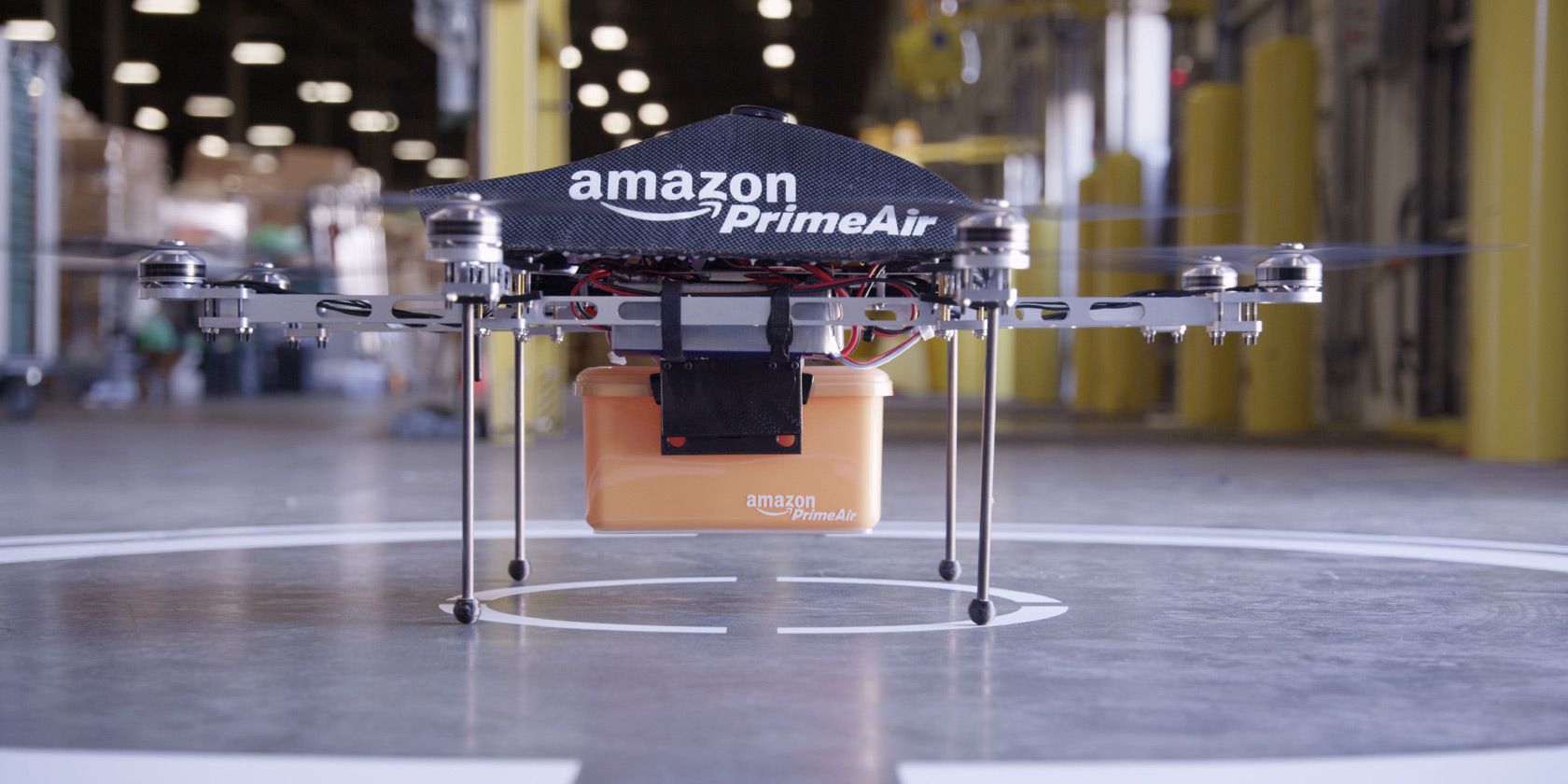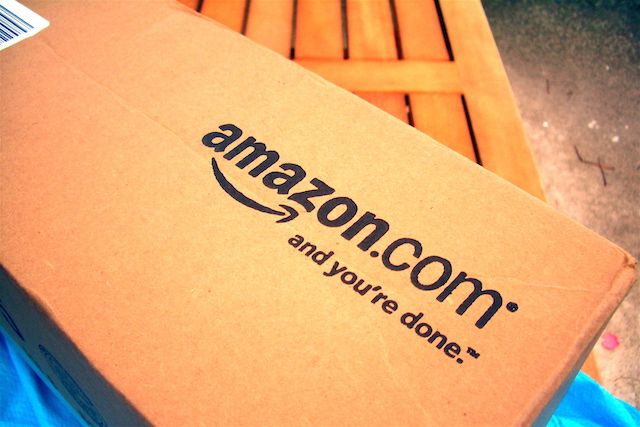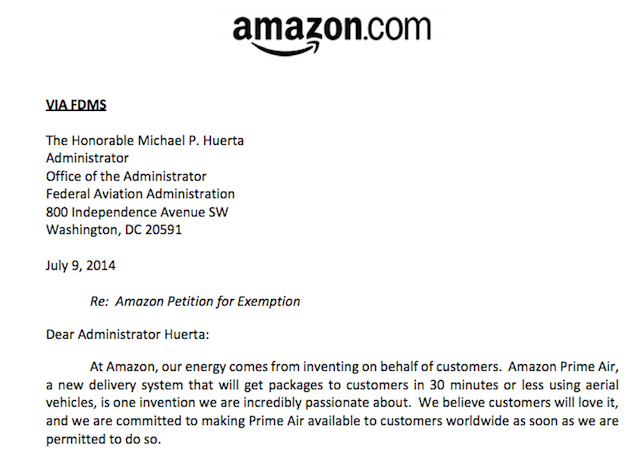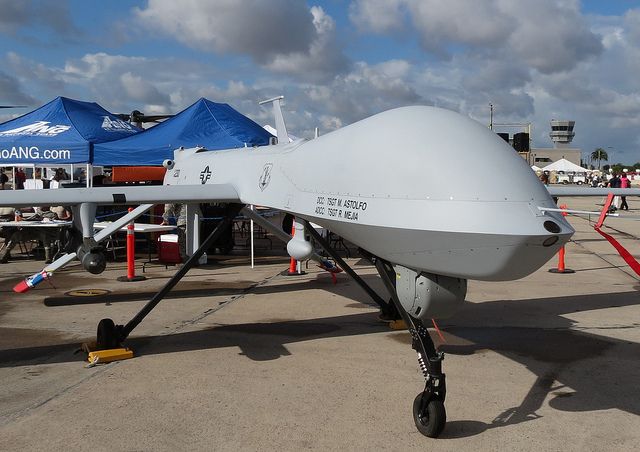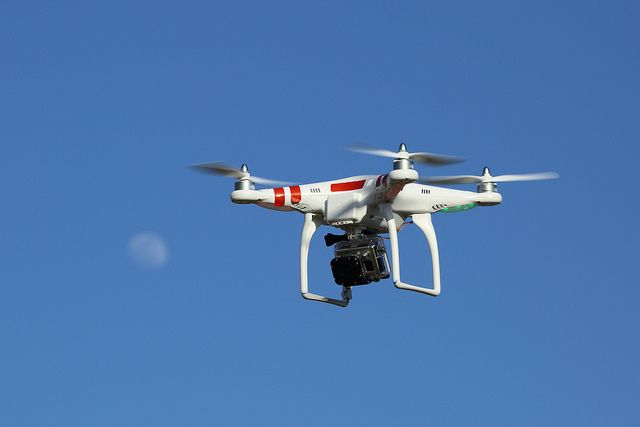For Amazon and many other retailers, the holy grail of logistics is same-day delivery; The ability to be able to process, pack, ship and deliver an order, all within the same day.
But the problem is, this has proven to be fiendishly difficult. Humans are slow. Supply chains are spread out. Trucks can only travel so fast. It's hard.
Don't get me wrong. Many have tried it, and many have failed; like Kozmo.com, which in 1998 promised one-hour delivery on a range of products - from groceries to electronics, DVDs and even Starbucks. But they collapsed not long after, having burned through $250 billion of investor's money, with little to show for it.
But where Kozmo.com failed, there've been some unlikely, standout successes. Almost every viable same-day delivery service offers a limited range of products, like the Y-Combinator funded L. Condoms, which offers one-hour delivery on prophylactics in San Francisco, Brooklyn and Manhattan.
But, nobody has been able to combine hyper-expedient delivery with the range of goods offered by the big online retailers, like Walmart, Tesco, Amazon and Target.
Until now, that is. Amazon thinks they've cracked it. By using unmanned, automated drones, they'll be able to get packages into the hands of buyers in 30 minutes or less.
It sounds improbable, but Amazon have already made some impressive ground on making this a reality. But they've still got an uphill battle ahead of them.
The Technical Challenge
Drone technology has improved at a startling rate over the past few years. It's gone from solely military and law-enforcement applications, to being affordable enough for hobbyists to use.
But the drones used by hobbyists are, as you'd expect, not of the caliber you'd expect Amazon to use. They're smaller, and weedier, and lack the range and stamina you'd need for a reliable delivery drone. Many of the more popular hobbyist drones, like the Parrot Bebop, struggle to cope with severe winds.
While there's certainly some interesting consumer-focused drones, there's nothing like that for the commercial world. Consequently, Amazon have had to develop their own UAVs from scratch.
Amazon have, for the most part, kept quiet about what they've come up with. However, in an open letter to the FAA, they dropped some hints about what they've been able to develop.
A potential Amazon Prime Air drone would be able to travel over 50 miles per hour, and can carry payloads of 5 pounds (2.25 kilograms) or less. That doesn't sound like much, but apparently it counts for 87% of all the goods sold on Amazon.
Goods that are heavier and bulkier, and ones that are particularly fragile, will still have to be shipped via more traditional means.
Amazon's drone aspirations will also mean that the retail giant will have to fundamentally and radically reassess how it handles fulfillment. Right now, Amazon has facilities spread across 17 US states, with a few facilities in Canada. They've also got some future expansion planned, with potential facilities opening in Connecticut, Maine and Illinois.
However, if Amazon is to deliver items within 30 minutes, this means they'll only be able to service customers within a 25 mile radius of their fulfillment centers. Some of these, it's worth noting, aren't located in big urban centers, but rather in small towns and the American countryside.
For Amazon Prime Air to really take off (no pun intended), they'll have to either open more fulfillment facilities, or significantly and radically increase the speed and stamina of their drones in order to serve more customers.
That says nothing about the countless regulatory headaches they're going to have to deal with.
The Regulatory Challenges
Airspace is something that's - in the US especially - closely monitored and regulated by the FAA (Federal Aviation Commission), who have the power to impose steep and punishing fines onto anyone who breaks its rules.
Consequently, it's not possible for Amazon to follow in Uber's path, where they would launch and deal with the regulatory headaches later. They've got to follow the letter of the law, and convince legislators that allowing Amazon to launch tens of thousands of computerized, algorithm driven drones into urban environments is a good idea.
As it is right now, it's illegal for a commercial entity like Amazon to launch their own unmanned flights in public places. They're limited to indoors, while hobbyists and the general public have much greater leeway. This is frustrating, given the amazing commercial potential for small, cheap, unmanned aerial vehicles.
So, in order to pave the way for a future product launch, Amazon has been heavily lobbying the FAA. In an open letter published July 9th, 2014, they made the case for a future launch of Amazon Air, and stressed the maturity of the vehicles they've been testing.
They also requested an exemption to the rules that prohibit outdoor drone flights by commercial entities, in order to real-word test their products.
The FAA, in 2015, responded favorably by issuing an exemption, and granted one of the drones with an experimental airworthiness certificate. This permitted them to launch outdoor test flights, but under a very restrictive set of conditions.
They're only allowed to test the drones in clear weather conditions, during daylight, and with the drones within the operator's line of sight. Moreover, they can only fly under 400 feet (122 meters). This would allow them to more rigorously test the devices they've been developing, but offers no scope for commercial deliveries.
There's certainly cause for excitement, but Amazon still has a long way to go. Not least because there's no way of doing any kind of centralized, air-traffic control for drones, and no way to remotely prevent them from entering the flight paths of commercial aviation, or approaching restricted areas.
Public Perception Challenges
To say that drones have somewhat of an image problem is putting it mildly.
Before the recent deluge of cheap, consumer UAVs, drones were associated with American foreign policy in the Middle East and in South East Asia. They were associated with legally dubious military interventions, and dead kids in war zones. The word "drone" almost became a dirty word.
Even now, despite the increase in public interest, they're still viewed with an air of suspicion. Indeed, drones have seen some people physically attacked for using them.
In July 2015, a Kentucky man downed a hexacopter with his shotgun after it was found loitering over his property. He was subsequently arrested for criminal mischief and wanton endangerment. The case is ongoing.
And in May 2014, an Ohio woman was convicted of third degree assault and breach of the peace, after attacking a teenage boy she assumed was spying on her with a drone. The woman was sentenced to two years probation.
It doesn't help either that major tech companies are increasingly associated with nefarious, privacy intrusive behavior, and drones are still a relative rarity.
If Amazon manages to pull Prime Air off, this is a problem that will ultimately resolve itself. As drones become more familiar, people will ultimately become less suspicious of them. But in the first few years, they can expect a great deal of public opposition.
Amazon will also have to prepare for the inevitable drone that crashes out of the sky.
Let's be honest. These are inevitably going to be heavy pieces of machinery that operate at a high altitude. Should one somehow fail and land on a car, or a person, it will cause a lot of damage.
Amazon will have to assure the public that their drones are safe. When the inevitable happens, and one does fail, they'd better have their checkbooks out.
AirBnB only really survived its early scandals by offering hosts a generous insurance scheme, and by decisively intervening when something happened. Amazon will have to learn from their lessons.
Amazon Wants To Be The Master Of Your Impulses
There's something about Amazon Prime that appeals to our very impulsive nature. Should we get a passing craving, or see something we want on the TV, we can order it and have it on our doorsteps in just two days. Amazon customers in the UK get free one day delivery.
Then there's Amazon Dash. This was announced in April, and was widely suspected of being an April Fools joke, but actually became available early in August 2015.
Run out of toilet paper, or detergent, or even soda? These tiny buttons allow you to order household goods, simply by pressing a low-powered WiFi enabled button. No computer or tablet involved.
Combined with Amazon Dash, Amazon Prime Air takes that principle of appealing to our impulsive nature to its logical conclusion. It panders to our every passing whim, and the expedient nature of its delivery ensures that there's no time for buyers remorse. And because there are no screens involved, it won't be possible to verify or compare prices.
Brilliant, isn't it? Jeff Bezos is going to get even richer.
Is The Age Of The Drone Deliveryman Near?
Not yet.
There's still a lot of work to do. Amazon needs to build a drone that they can depend upon to deliver goods, and not injure the public. They need to convince the FCC, and the public, that the drones are safe. And they need to radically reimagine how they will handle fulfillment.
There's a lot of work left to do. But is it looking promising? Absolutely. What do you think? Let me know in the comments below, and we'll chat.
Photo Credits: Box (Mike Seyfang), Ywprd_1b (Greg Goebel), Drone and Moon (Don McCullough)

